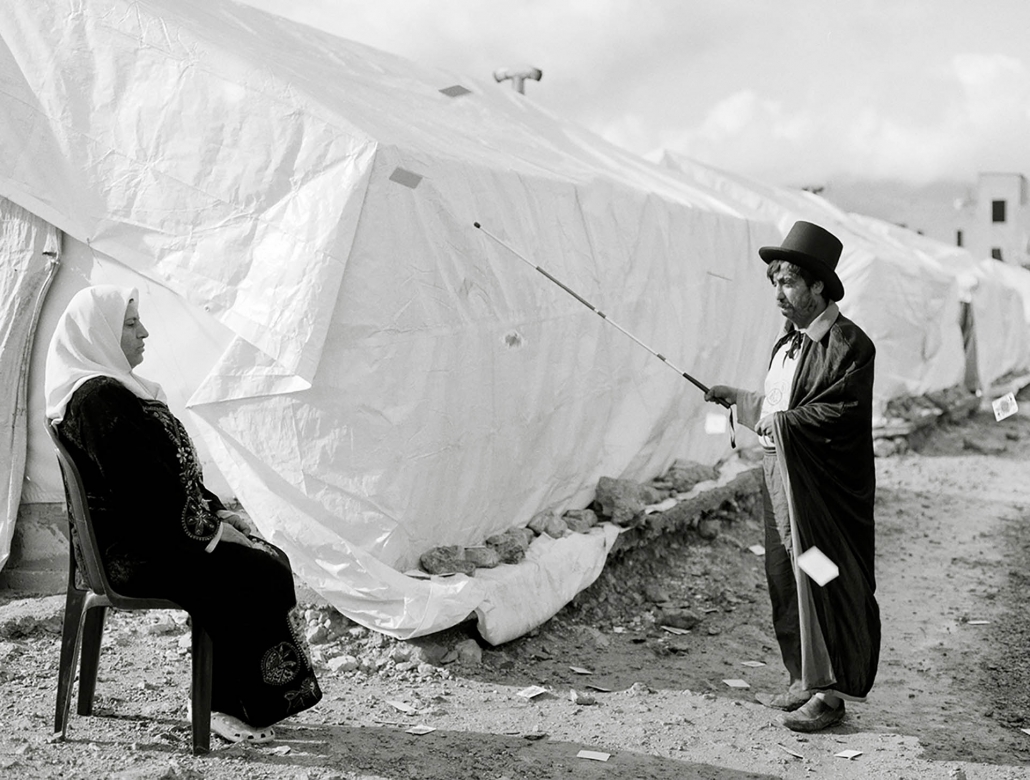BIENNALE DES PHOTOGRAPHES DU MONDE ARABE CONTEMPORAIN
This post is also available in:
 French
French
Years of civil war in Lebanon (1975-1990) deeply affected photographers. The need to keep the memory of a lost architectural heritage and to show the stigma of the conflict seems to be at the heart of their artistic preoccupations. Some current works keep this memory but a new generation came apart from this path to address new subjects. Notorious artists or those who are few exhibited in France, these photographers make part of an artistic effervescence reflecting through the exhibition.
”Even if most of the artists gathered in this exhibition are Lebanese, some of them had decided to live somewhere else (Nadim Asfar) while continuing to create in and on their country. Some of them are ”foreigners” passing by (Greek Demitris Koilalous kept a travel journal) who provided a vision of Lebanon which was marked by their own culture ; other ones had chosen to come there to stay (Ieva Saudargaitė Douaihi). […] As mentioned by Vicky Mokbel, a need to express oneself and an artistic effervescence emerge from the situation this country finds itself: fragile and unstable, failing to find a balance, or even a proper independence. […] The desire of young artists to witness irreparable human consequences of the past conflicts in Lebanon is still here when it’s not about the traces still visible on the facades of buildings. In different ways, many works make continue this memorial tradition while expressing the necessary commitment of the artist: the theme of the missing lives in Dalia Khamissy’s photographs whereas the presence of the military ”thing” in town as every day is haunting the women whose portrait was created by Lamia Maria Abillama.
Wars and tensions are at the doors of Lebanon: it’s expressed in Omar Imam’s original staging work involving Syrian refugees. The feeling of being torn apart between two countries is illustrated by Tanya Traboulsi’s diptychs creating a dialogue between photographs of Austria and Lebanon. The one of exile is reflected in the views of Mount Ararat discovered by Gilbert Hage on the walls of the apartments of the Armenian community in Beirut. As for the disorder of the urban landscape, it seems to fascinate Ieva Saudargaitė Douhaihi whose images make up an astonishing symphony of forms and materials beyond the representation of building which interests him by his training as an architect. Vicky Mokbel considers the Electricity of Lebanon’s building in Beirut as a symbol of the deplorable state in which the country finds itself today. This doesn’t stops Vladimir Antaki from expressing his love for this city through a recurrence of architectural fragments which he transforms into abstract geometric patterns.” – extract from the text of Gabriel Bauret, chief curator of the Biennale
This variety of patterns and approaches, this dialogue between sensibilities feeds the spirit of the exhibition at the IMA bringing together 18 artists.
The exhibition unfolds in two parts: a first documentary sequence is in touch with the geographical, urban and social reality, the history, the work of memory, the mixture of the communities, the exile. The second one escapes the constraints of realism and brings together artists dragging us into other landscapes, be they dreamed or invented, expressing the quest for elsewhere, the desire to escape: these works approach the register of fiction, cultivate the imaginary when developing forms such as photomontage or digital collage.
On the occasion of this third edition, the IMA has chosen to put the contemporary scene of Lebanon in the spotlight with works which were mostly made during the 2010s.
From 11/09/2019 to 24/11/2019
INSTITUT DU MONDE ARABE
1 rue des Fossés-Saint-Bernard
75005 PARIS
France
Opening hours : Tuesday to Friday from 10am to 6pm, Saturday and Sunday from 10am to 7pm
Phone : 01 40 51 38 38
www.biennalephotomondearabe.com



